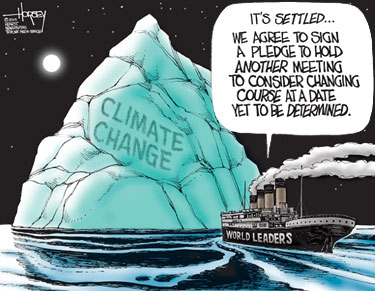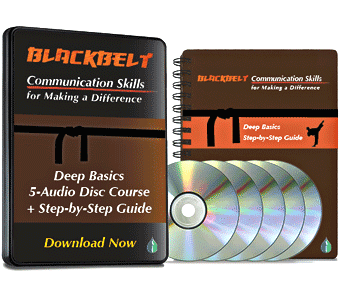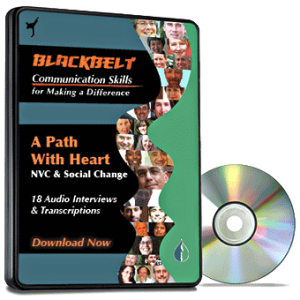Do you have the feeling that you are a passenger on the Titanic and you can see the iceberg ahead? Why can’t everyone see it? Its huge! Immediate Course Change Needed! Red Alert! WeeOooWeeOoo!

Five communication guidelines can help you as a change agent and positive change maker. Odds are good that you have conversations with people about how important it is that we address the major problems in our economic, ecological and social systems. Do you sound something like this?
“Let’s get real! The poor are getting poorer as the wealthiest people smoke cigars made out of 100 dollar bills. Media corporations are being consolidated and internet neutrality is becoming a bandwidth pipe dream. Climate change is ruining farms and spoiling family vacations. Big business farms are engorged with viagra-like genetically-modified food varieties. Invasive non-native plants are engulfing my grandpa’s old abandoned truck. The Girl Scouts are partnering with Mattel’s Barbie Doll product line, for crying out loud! We need big changes now!”
Ok. Maybe your conversations sound a little different.
Perhaps you are already aware that the way you share your message is as important as the message. If we deliver important information to decision makers with compassion, curiosity and respect, there is a better chance that we will be heard in the way we want to. The most effective way you can help to create changes is to keep calm and clear, even if the other person has a more adversarial approach. A little lightness and humor never hurts either. Keep passion tucked into your pocket, not on your sleeve. If you are going to speak with passion, be sure to communicate in a way that does not blame, criticize, or put-down others.
Shame and blame are guaranteed to sink a conversation, along with righteousness and judgment. They don’t allow for as much of an opportunity for true connection, safety and trust to grow. Those connections are crucial to developing win-win strategies that people can buy into and will sustain us in navigating the stormy seas of change.
Consider the difference between the following two statements made to a decision-maker:
“People just don’t realize how much their desire for a steaming latte’ in a throwaway cup is affecting our future generations. Changes in policies and practices need to happen now!”
OR
“The quality of life for myself and my grandchildren is something that I have concerns about. I am working to increase efficiencies and reduce waste in our daily lives. I have these educational resources and policy changes that I was wondering if we could talk about for 10 minutes.”
Consider that without the following essential communication flotation devices, your conversations and great ideas will go down with the ship.
- Walk with compassion – Treat others people with intentional kindness, care and respect, knowing that everyone is doing their best they can with the circumstances.
- Listen more than speaking – Empathy is pure presence. When in doubt, or if you think it’ll serve the connection, reflect back what you are hearing them say. When others have a chance to be heard first, there is a much greater chance that you will be heard by them. Give them the experience that you understand their perspective (which is different than agreeing).
- Find the common needs – Discover with that person, in curiosity, what values you share. For example, maybe you both value efficiency in the use of financial and natural resources, or a shared caring that future generations have the same opportunities as we have.
- Rehearse and state your ideas and strategies clearly and concisely – If in doubt that your message is getting through you can request that they restate your points to be sure that you were clear enough. This will confirm whether or not they understand what you are saying, which is good to know before going too far into a conversation.
- Set up ways to follow through with them – One conversation does not necessarily make changes. Approach your conversations so that they include the potential for future conversations. Sometimes the thing you’re wanting, and a mutually enriching solution, may be seven conversations down the line.
Sail on! If you are looking for a bright lighthouse to help keep you off the rocks, set your course for into greater personal power and compassion. Get the mindsets and tools that will let you stand in your power while also staying compassionate and connected to yourself and others. Build powerful relationships with yourself and others with these invaluable Nonviolent Communication Tools and much more.
Complete and Powerful Training
Blackbelt Communication Skills (NVC), Deep Fundamentals
Gain valuable tools and mindsets that are proven to:
- Create exceptional personal and professional relationships
- Prevent and resolve misunderstandings and conflicts
- Speak your mind effectively
- Create mutual understanding without coercion
5 CDs’-worth of audio with a 99-page PDF that breaks down the NVC curriculum into 9 “steps.”
Complete with examples, exercises and worksheets.
Huge Amount of Inspiration for One Low Price
A Path With Heart: Telesummit on NVC and Social Change – Recordings and Transcriptions
- Discover leading-edge social change work that is truly creating a difference
- Hear in-depth interviews with some of the world’s best-known Nonviolent Communication trainers
- Get inspired with stories, tools and resources
We’ve brought together an amazing team of teachers and leaders who reveal valuable practical social change applications of Nonviolent Communication including Robert Gonzales, Miki Kashtan, Dominic Barter, Rabbi Michael Lerner and over 20 others.
Learn more on the A Path With Heart website

